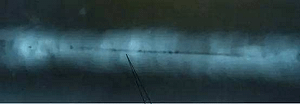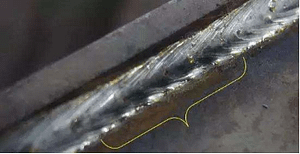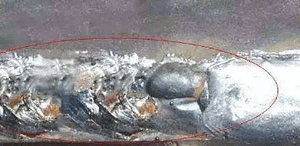Effects of Welding Parameters and Process on Weld Seam
Effects of Welding Parameters and Process on Weld Seam:
1. The influence of welding current, arc voltage and welding speed on weld seam
(1) Connect the current
When the welding current increases (other conditions do not change) , the weld penetration and residual height increase, dissolve width does not change (or slightly increase) , the reasons are as follows: 1, the location of heat source moved down, and the penetration increased. The penetration depth is almost proportional to the current. With the increase of current, the melting amount of welding wire increases proportionally, and the residual height increases because the solution width is nearly constant. 3 with the increase of current, the diameter of arc column increases, but the depth of arc penetration into workpiece increases, the moving range of arc spot is limited, so the solution width is nearly constant.
(2) ARC voltage
When the arc voltage increases, the arc power increases, the heat input of the workpiece increases, and the arc length lengthens and the distribution radius increases, so the melting depth slightly decreases and the solution width increases, while the residual height decreases, because the solution width increases, the amount of welding wire melting is slightly reduced.
(3) Welding speed
When the welding speed increases, the line energy decreases, the penetration depth, the width and the residual height decrease. This is because the amount of deposited wire metal on the unit length weld is inversely proportional to the welding speed, and the width is inversely proportional to the square root of the welding speed.
2. Method
Direct current connection: workpiece welding machine positive pole, welding torch welding machine negative pole;
DC reverse: workpiece welding machine negative, welding torch welding machine positive.
In general, the penetration depth and width of direct current reverse welding are larger than that of direct current direct welding, which is due to the larger energy released from the workpiece (cathode) . When direct current is connected, the welding wire is the cathode, and the melting rate of the welding wire is larger.
The penetration depth of direct current direct welding is the largest and reverse welding is the smallest in TIG welding. Welding aluminum, magnesium and alloy have the problem of removing the oxide film on the surface of the molten pool. Welding other materials generally with direct current connection.
3. Weld forming defects and causes of defects formation
(1) Incomplete penetration: the phenomenon of incomplete penetration at the root of the joint during fusion welding is called incomplete penetration. The causes are low welding current, high welding speed or improper groove size and wire not aligned to the center of the weld. When CO2 welding with short-circuit transfer of thin welding wire, this kind of defect is easy to occur because of low heat input of workpiece.

(2) Burn-through: when welding, the molten metal flows out from the back of the weld, forming a perforation phenomenon called Burn-through. This kind of defect may be caused by too large welding current, too small welding speed or too large size of gap groove.

(3) Undercut: in the base metal along the weld, the phenomenon of melting to form a depression or groove is called undercut. Defects may occur during high speed welding with high current. When fillet weld of web is in the vertical position, if the welding foot is too big or the voltage is too high, it will produce undercut.

(4) Weld: Weld when the molten metal flow to the weld outside the base metal on the formation of non-fusion metal tumor is called the phenomenon of weld. Welding is caused by too much filling metal, which is related to small gap and groove size, low welding speed, low voltage or large length of welding wire extension.

Learn more our project quality managemet, QAQC and third party inspection (TPI), NDT practices thru below link.-
https://www.jsc-safe.com/category/wharves-jetties/
